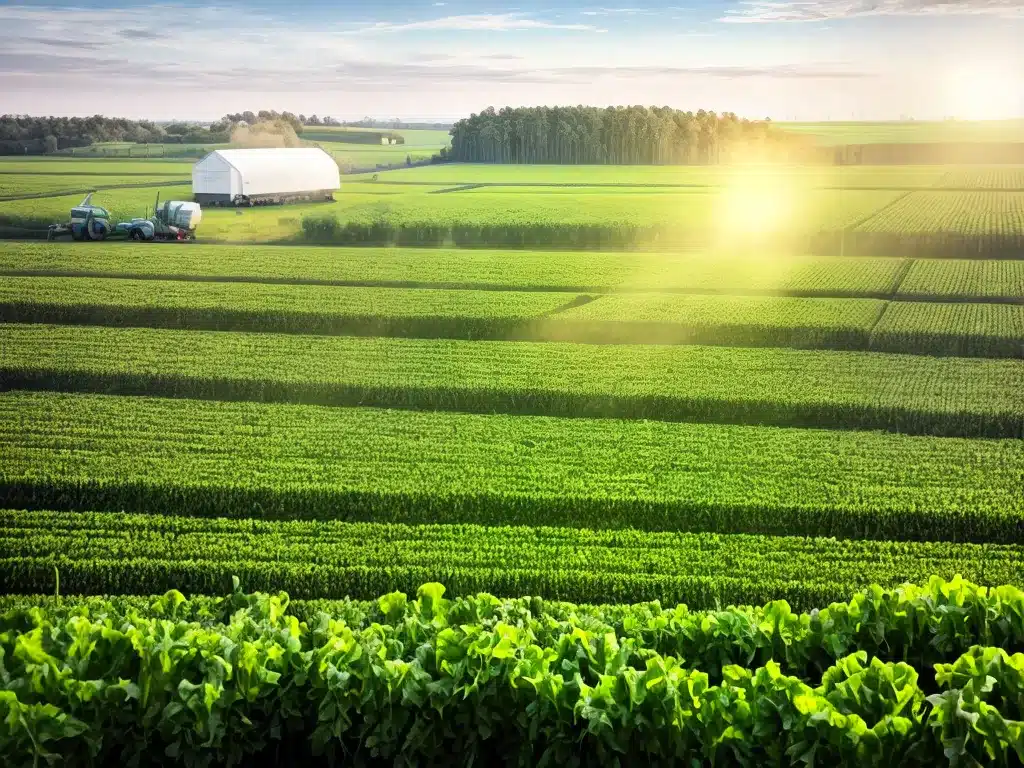
IoT in Agriculture: From Farm to Fork
Introduction
The Internet of Things (IoT) is having a major impact on agriculture and the food supply chain. IoT sensors, devices, and applications are enabling farmers to increase yields, reduce waste, and make more informed decisions. This technology allows the food supply chain to become more traceable, transparent, and efficient from farm to fork. In this article, I will provide an in-depth look at how IoT is transforming agriculture and the food industry.
How IoT is Used in Agriculture
IoT technology is being used throughout the agricultural process from the field to the table. Here are some of the key ways IoT is utilized on the farm:
Precision Agriculture
- Precision agriculture leverages IoT sensors, smart devices, and data analytics to optimize farming operations. Sensors in the field can monitor soil conditions, crop health, temperature, humidity, etc.
- GPS-enabled farm equipment can plant seeds and apply fertilizer and pesticides with extreme precision, helping reduce waste and costs.
- All this farm data gets aggregated in the cloud and analyzed by software to gain insights and make data-driven decisions.
Smart Irrigation
- IoT-enabled irrigation systems can optimize water usage by monitoring soil moisture levels and weather forecasts.
- They can automatically adjust irrigation amounts and schedule based on data.
- This prevents overwatering and runoff, saving water and costs.
Livestock Monitoring
- Connected sensors can track livestock location and health metrics like body temperature and movement.
- Farmers can be alerted about distress signals or if an animal wanders outside a geo-fenced area.
- This allows early identification of illnesses so farmers can quickly treat animals.
Greenhouse Automation
- Climate-controlled smart greenhouses rely heavily on IoT automation.
- Sensors continually monitor temperature, humidity, light, soil moisture, etc.
- Automated control systems then adjust actuators to optimize growing conditions.
Farm Equipment Monitoring
- Integrating telematics and IoT sensors in tractors and other farm vehicles provides machine analytics and diagnostics.
- Farmers can analyze equipment usage, optimize maintenance schedules, and remotely manage fleets.
IoT in the Food Supply Chain
IoT also enables supply chain transparency and visibility from farm to fork. Here are some key applications:
Food Traceability
- IoT-enabled sensors and RFID tags allow tracking of food across the supply chain. This provides full traceability and visibility as food moves through storage, processing, distribution, and retail.
- If there is a foodborne illness outbreak or recall, the food can be quickly tracked to its origin for containment.
Cold Chain Monitoring
- Perishable foods like meat and produce require careful temperature and humidity monitoring during transport to prevent spoilage.
- IoT sensors enable real-time cold chain monitoring and logging for accountability.
- Smart containers can autonomously adjust conditions to maintain product quality.
Inventory and Warehouse Management
- IoT devices like smart pallets and product scanners enable dynamic inventory counts and location tracking in warehouses.
- This provides real-time transparency into inventory levels and shipments.
- Automated systems can reorder products and optimize warehouse workflows.
Fleet Management
- GPS tracking and IoT sensors on food delivery trucks provide real-time visibility and analytics into fleet operations.
- Managers can monitor location, fuel consumption, driver behaviors, and engine diagnostics to increase efficiency and safety.
Smart Food Safety
- IoT-enabled sensors can monitor pathogens, allergens, sanitation, and other variables in food facilities.
- Smart applications can automatically control food safety parameters and take corrective actions if needed.
- This prevents food contamination and reduces risks associated with human error.
Benefits of IoT in Agriculture
Deploying IoT technologies in agriculture and across the food supply chain provides numerous benefits, including:
- Increased productivity and yields
- Optimized resource usage (water, fertilizer, pesticides)
- Reduced waste and costs
- Early disease and distress detection for livestock
- Complete transparency and traceability from farm to consumer
- Minimized farmer workload and automated processes
- Enhanced food safety and quality control
Challenges of Implementing IoT in Agriculture
While promising, scaling IoT across agricultural operations also poses some key challenges:
- Initial investment costs in sensors, connectivity, infrastructure, and integration
- Difficulty integrating different legacy software and hardware systems
- Concerns over data privacy, security, and ownership
- Rural connectivity limitations in remote farm areas
- Lack of technical skills and training among farmers
- Ongoing maintenance of connected systems and infrastructure
Overcoming these challenges will require cooperation across the industry, government, and technology firms. But the long-term benefits will make the effort worthwhile.
The Future of IoT in Agriculture
The future looks bright for IoT transforming every link of the agricultural value chain. Here are some exciting areas of innovation:
- AI-powered analytics to derive more value from farm data
- Autonomous farm equipment like driverless tractors
- Drone-enabled crop surveillance providing aerial views of acreage
- Robotic harvesters to pick fruits and vegetables
- Blockchain for agricultural supply chain transparency
- 5G connectivity enabling massive IoT deployments across rural America
As costs come down and technology advances, IoT will become further ingrained in agricultural operations. The next generation of smart, connected farms will maximize production efficiency while minimizing environmental impact. IoT will continue leading agriculture into a more sustainable, intelligent future from farm to fork.












